Want to learn how to design a barcode label? In this article, we’ll explore how to make a barcode and ways you can explore creative barcode design too.
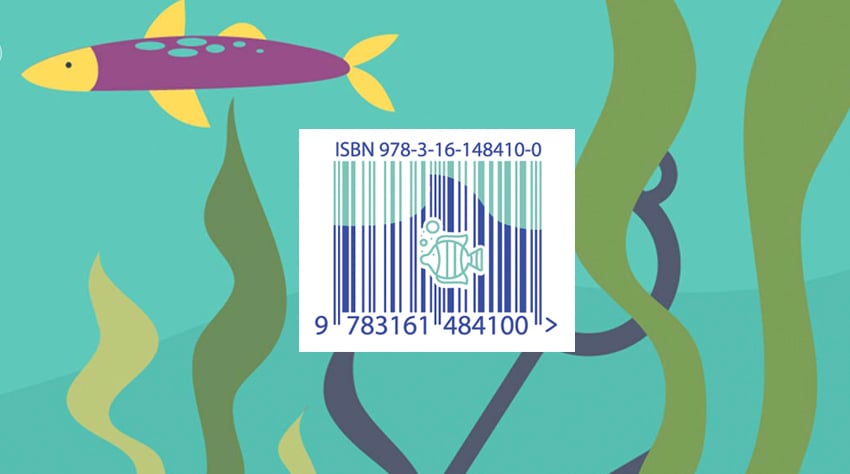
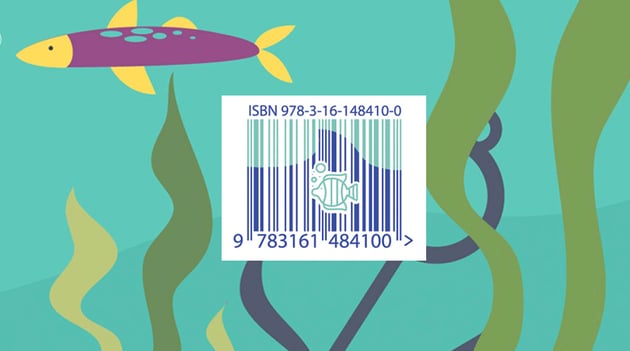
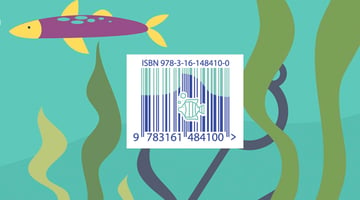
What You’ll Learn
- What is a barcode and what are barcodes used for?
- How to make a barcode and what tools you can use
- How to design a barcode label with creative barcode design ideas
What You’ll Need
- Ocean Outline Icons
- A Barcode Creation Tool—such as Softmatic Barcode or an online barcode generator. There are a number of free and premium options.
- It’s recommended that you download an app for test scans of your barcode to ensure that it works properly—especially if you get creative with it!
We will be working in Adobe InDesign and Adobe Illustrator in this walkthrough. However, these concepts would also apply to other software.
What Is a Barcode and How Do Barcodes Work?
What Are Barcodes?
Barcodes visually represent data in a way that machines can read. They are typically a series of parallel lines and spaces that vary in width. Many different industries use barcodes to encode data. For example, you could use barcodes to track inventory or store product information. Barcodes are present on most retail packaging, books, many ID cards, and more.
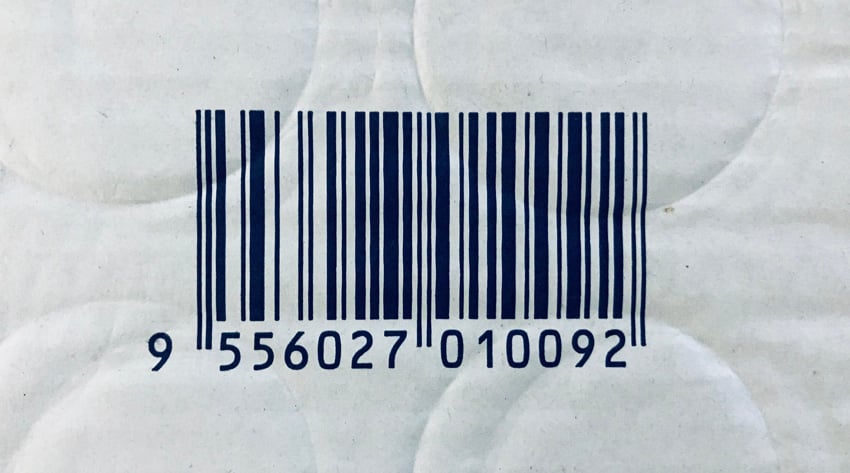
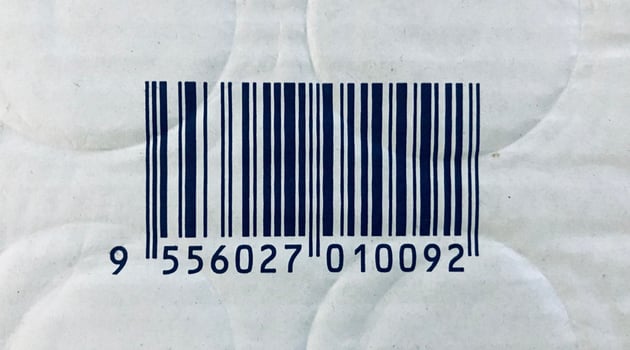

For example, most modern stores use barcodes when you check out at a register. Think back on this experience—someone scans the barcode, and then the price comes up on the register. It’s far more convenient than inputting prices and managing inventory by hand. It also likely cuts down on errors—like jotting down the wrong price or forgetting to mark a change in inventory. Using barcodes would save time and resources, in this scenario, while also saving time on organization and tracking.
What Can I Do With Barcodes?
The above example is one of the more common ways barcodes are used. However, here are some other examples of barcodes in use:
- Shipping—many modern delivery services use barcodes for shipping, logistics, sorting, and delivery. Rather than doing this by hand, you scan can send this information to a computer for record-keeping and updates.
- Inventory—instead of counting how much stock of something is available by hand, barcodes can help automate this tally.
- Tracking—loyalty cards are a great example of barcodes used for tracking. Not only can customers be rewarded for purchases, but stores can use the data to track habits and trends.
- Authentication—tickets, passes, and labeling are all great examples of barcodes in use.
Lots of industries and scenarios benefit from barcodes. Libraries, for example, can use barcodes to keep track of books coming and out. Books themselves usually have an ISBN, which is often represented as a barcode. Payments can even be made with scannable codes.
What Types of Barcodes Are There?
There are many different types of barcodes. Here’s a brief overview of some of the different barcodes out there:
- Code 39—this was one of the first barcodes out there. It’s still commonly used in many industries too. It’s an alphanumeric code.
- Code 128—this is a higher density barcode than Code 39. It’s also alphanumeric, but can often result in smaller barcodes.
- UPC—this stands for Universal Product Code. This barcode is quite common on retail merchandise.
- EAN—this stands for European Article Numbering. This barcode is also often used in a similar way to UPCs, and the first number is a country code.
- PDF417—you may see this type of barcode on official documents, like driver’s licenses in some countries. It can encode more data than many of the other barcode types.
- QR Codes—this stands for Quick Response Codes. You’ve likely seen these on packaging and marketing, encouraging you to scan for more content.
Which barcode is best for your project will depend on the project’s specifications. For example, if you’re self-publishing a book, you’ll likely need to work with an ISBN number, which has its own specifications, and it’s typically based on an EAN code. This is different from the scannable barcodes you might see on mail deliveries and labels, which use a different system.
How Do Barcodes Actually Work?
Those lines and spaces all represent data, and their arrangement matters. That’s how it encodes information that a specialized device, like a scanner or camera, can read and then decode. So, for example, when your smart device reads a QR code, it’s recognizing the pattern, decoding it, and then converting it into information—like numbers, words, or a website address. This is why haphazardly arranging lines won’t really do much—there’s a logic to the pattern of lines and spaces that these devices can read.



As you may have guessed, some industries use a lot of barcodes—thousands upon thousands! Think about how many packages get sent and received around the world every day—or think about how many different items are in just one store. In many cases, a plain barcode may make the most sense. However, in more niche or creatively driven situations or industries, you might want to experiment with the look of your barcode.
1. How to Make a Barcode Yourself
Use the Right Barcode-Making Tools
You may be wondering how to make a barcode yourself. It sounds pretty complicated, right? Well, thankfully, there are some tools you can use to easily create a wide variety of barcodes.
- Adobe Illustrator actually has plugins you can install that will allow you to generate barcodes right within the software. One example is Softmatic’s Adobe Illustrator Barcode Plugin. This is a very convenient option, although it is not free.
- There are a number of barcode generation software options out there, both free and premium. This can be handy if you intend to work with many barcodes regularly. As an example, Softmatic also has a standalone barcode generation application you can try for free.
- You can also download a barcode font—Google Fonts has several that work very well, such as Libre Barcode 39, which works for encoding Code 39, Code 128, and EAN-13/UPC-12 formats.
- You can also easily create barcodes in Google Sheets, again, using one of the open-source barcode fonts available via Google Fonts.
- You can find free online barcode generators online too. These services are as simple as inputting your value and letting it generate the code for you.
- Adobe InDesign has a QR code creation feature built right in, no plugins or add-ons required. It’s easy to use—just go to Object > Generate QR Code.
Test Your Barcode to Make Sure It Works
But how do you know if your barcode works properly? This is probably one of the most important parts when it comes to figuring out how to make a barcode. It’s no good if it doesn’t work!
Thankfully, it’s easy to test your barcode. You can download mobile apps that will allow you to scan a variety of barcodes.
- By default, most smart devices will be able to scan and read QR codes.
- For other barcodes, however, you’ll likely need a specific app to read them properly. There are a number of free options out there, so make sure to check your app store.
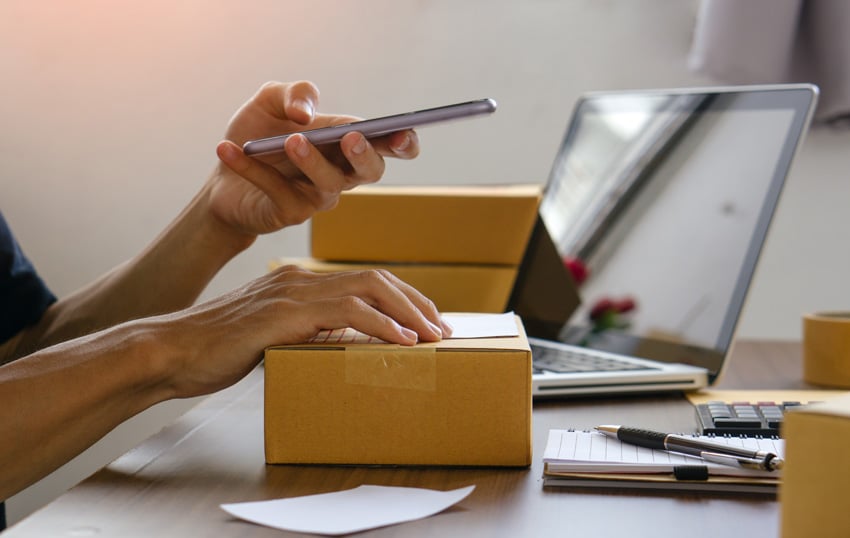


But Which Barcode Type Should You Use?
Check with your publisher, supplier, or tech requirements to decide which barcode type would be best for your project.
For example, if you’re looking to manage retail merchandise, UPC codes may be the strongest option for you. On the other hand, if you’re publishing a book, your ISBN number may have different considerations.
Do Barcodes Have to Be… Boring?
Nope! Barcodes can come in a variety of shapes, sizes, and colors. QR codes, in particular, can really do some creative and unusual things, while still maintaining their functionality. That’s one of the main challenges here—you don’t want to interrupt the data itself with excessive design elements.
2. How to Design a Barcode Label
Step 1
Just because barcodes have a ton of technical stuff going on, it doesn’t mean you can’t have fun with them. Again, it’s recommended that you have a test scanner or scanner app of some kind, so you can check your barcode. This is especially true if you opt to do something creative with your barcode design.
Here are some important notes to consider:
- Barcodes don’t always have to be black and white. Again, make sure to check the specifications of your unique project. However, in many cases, barcodes can be displayed in colors.
- However, keep your color and value choices high-contrast. For example, a yellow barcode on a white background will be likely to present scanning troubles.
- Keep in mind that your barcode still needs to look professional. Unusual color combinations may be confusing or look unprofessional. For example, you could have a bright green UPC code on a red background, but it probably wouldn’t look very good.
- Barcodes often have size requirements. Make sure to check the specs of your project to ensure you’re meeting all of the technical requirements.
- When in doubt, check your barcode design with a test scan. Having a test scanner handy while you’re designing can confirm that your barcode is still functional.
Step 2
For this demonstration, let’s create a barcode for a self-published children’s book. It will need to have an ISBN-13 barcode on the back of the book. For the sake of example, let’s say it’s a book about sea creatures. Having a whimsical barcode could be a fun extra touch for the book cover.
Before we start designing, let’s go ahead and create a barcode. I used Softmatic Barcode to generate my barcode.
Keep in mind that ISBN-13 numbers are assigned, even when you’re self-publishing a book, so they can be used by distributors, bookstores, and libraries. It’s not a number you’ll make up yourself. The number used in this walkthrough is a sample number, for demonstration purposes.
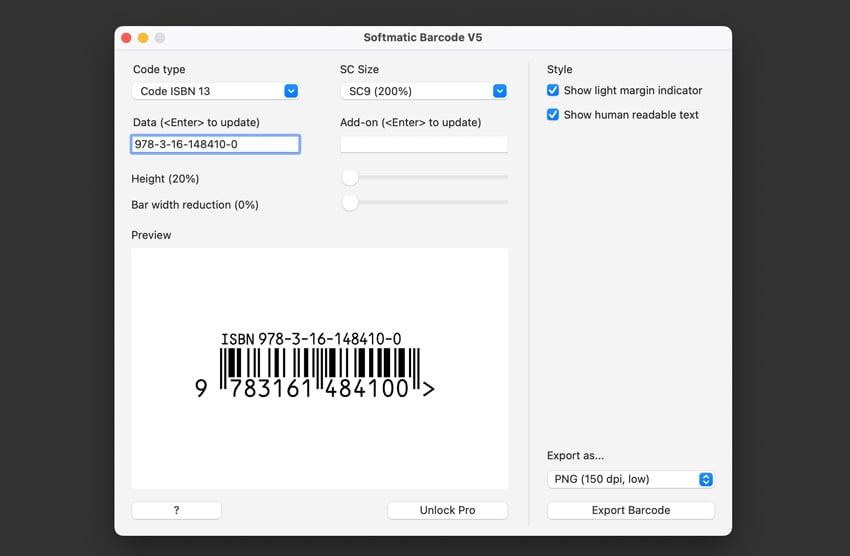
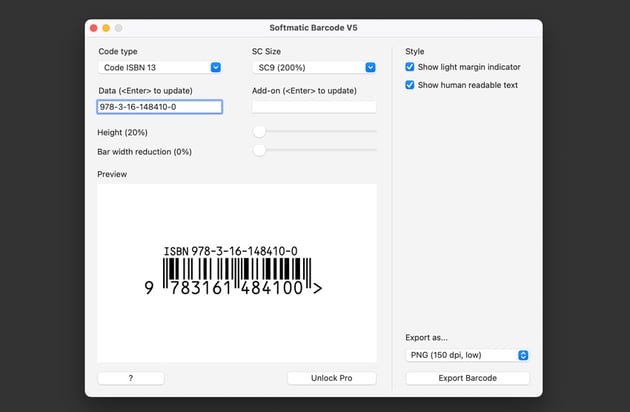
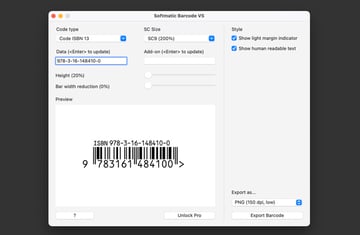
Step 3
Since we want to do something creative and unusual with this barcode, let’s go ahead and up the barcode Height to 100%. This will give us even space to work with.
Then, let’s save our barcode. You can click Export Barcode to do so. One of the great things about the Pro version of this software is that you get extra exports, like high-quality, scalable SVG files.
Remember, this is just one way you can generate a barcode. You can use any tool you prefer—online generators, plugins, or even a font.
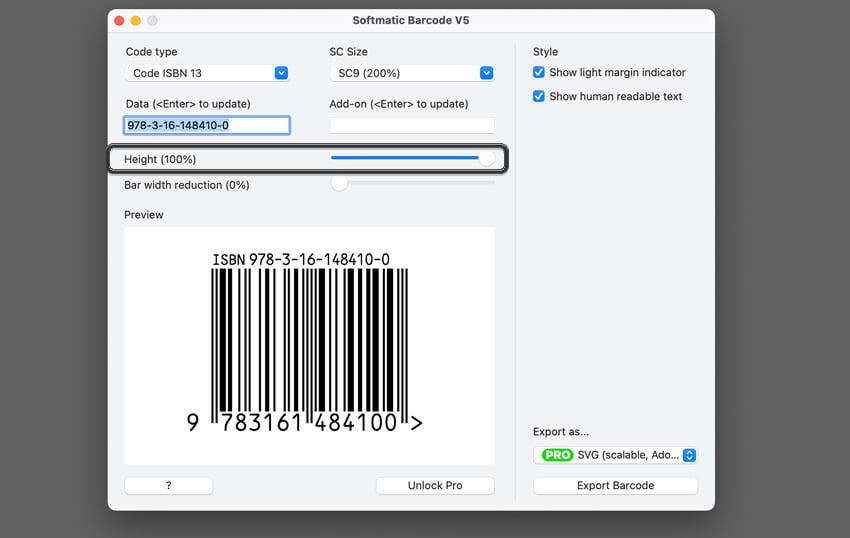
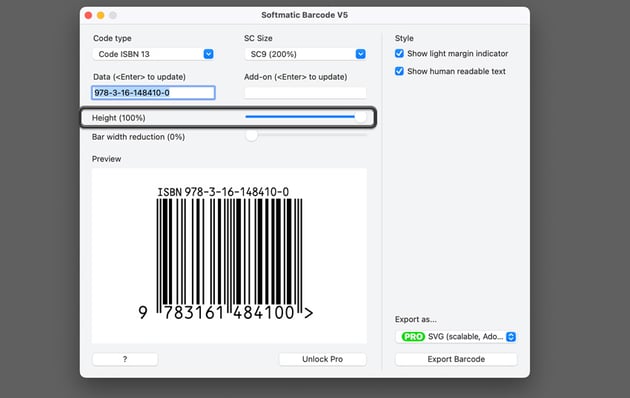
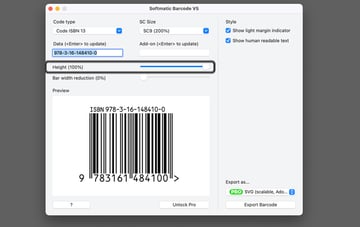
Step 4
At this point, you can open your barcode up in any software of your choice. Let’s use Adobe InDesign as an example. Here’s a sample book cover I created using these fun illustrative elements from Envato Elements, as well as this handwriting font. As a part of the design, I left a space for the ISBN number and barcode on the back of the book.
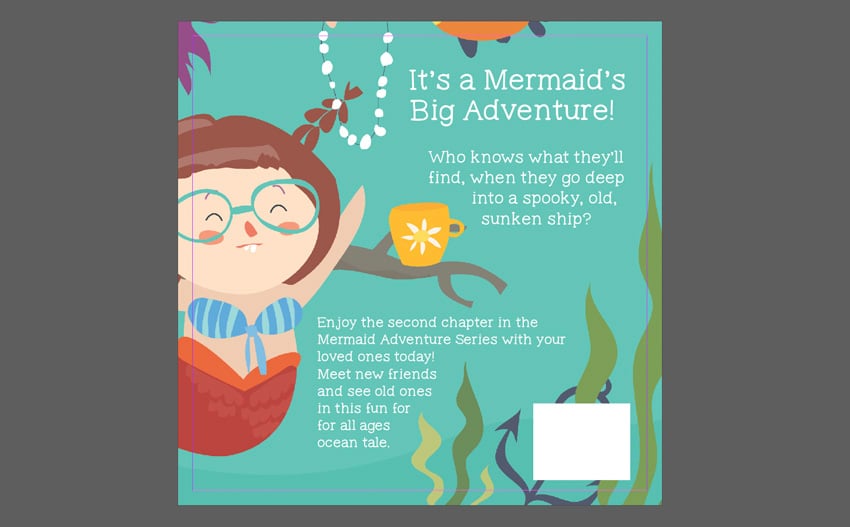
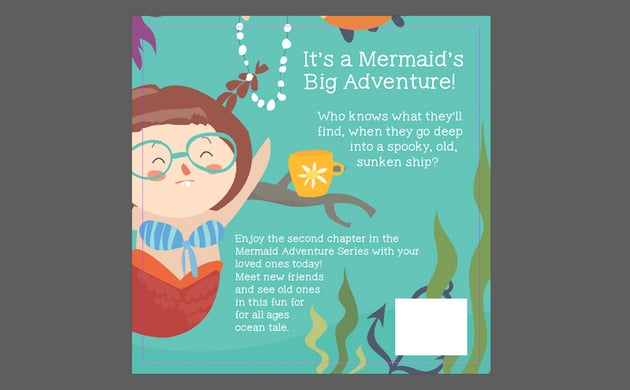
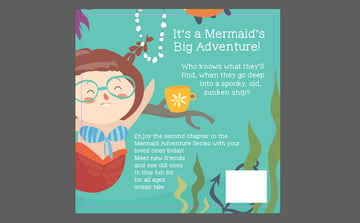
Step 5
To insert an image, go to File > Place. Then, we can select our exported barcode image on our computer. InDesign will then place it into our design document for us. Use the Selection Tool, in the Tools panel, to move and resize it.
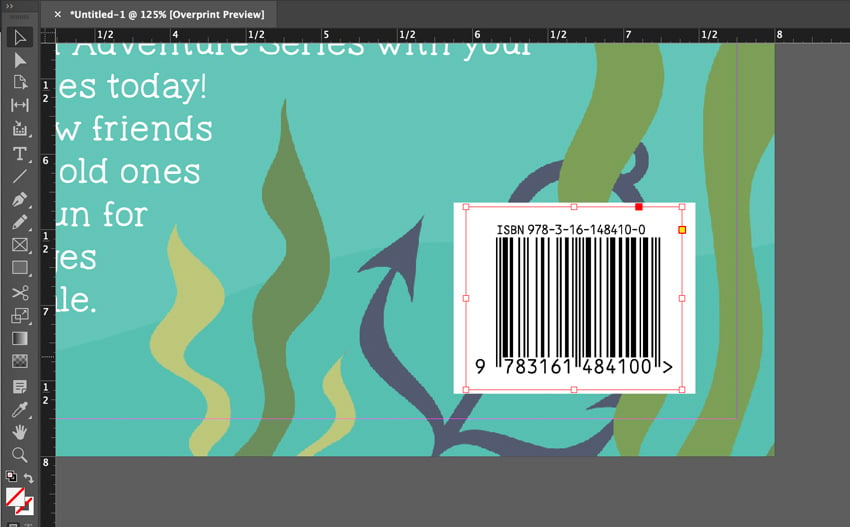

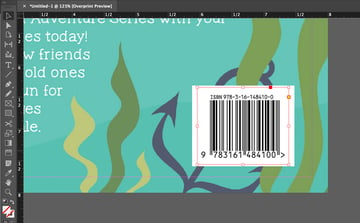
Step 6
While that looks nice, we wanted to try to do something more creative with our barcode. Let’s try to do something a little more unusual. For this, let’s turn to Adobe Illustrator.
First, open the barcode file up in Adobe Illustrator. Because I could export as SVG, it makes it easier to work with and edit my barcode in Illustrator. However, if you don’t have pro export options, you can still import a raster image and trace it.
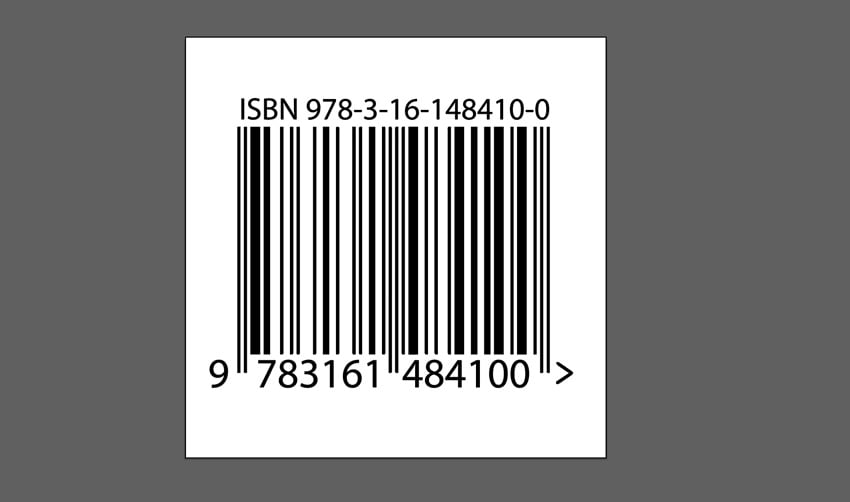
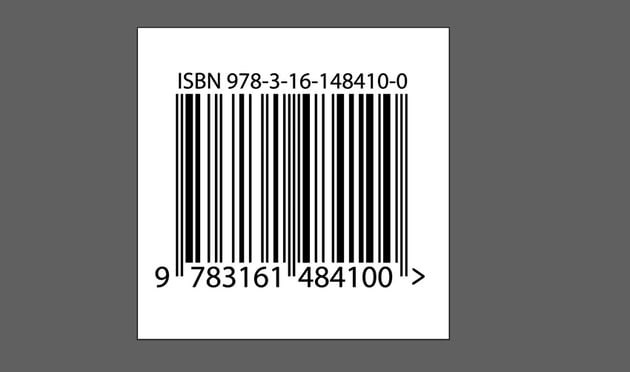
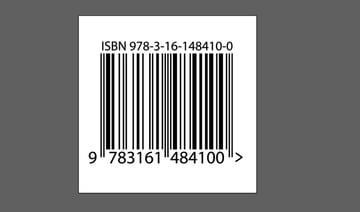
Step 7
Let’s start off with a simple color change. Select the Selection Tool, in the Tools panel. Then, click and drag to select all of the barcode contents.


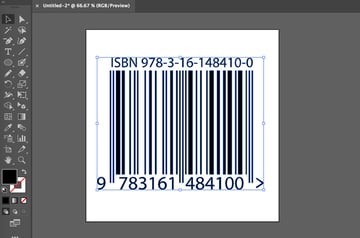
Step 8
Then, we can click on the Fill Color to open up the Color Picker. Choose a new color for your barcode—remember to make a choice that has high contrast against the white background. I went with a blue color, to go with the book’s ocean theme.
Once you’re happy with your color choice, click OK to continue.


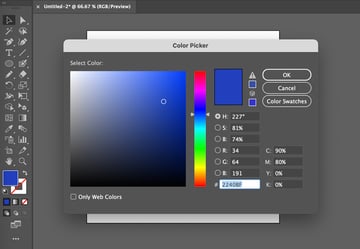
Step 9
Now we have a blue barcode! Feel free to take a moment to double-check your barcode and make sure it still scans. You’ll want to use a color that has enough contrast against the background color that it’s still scannable.

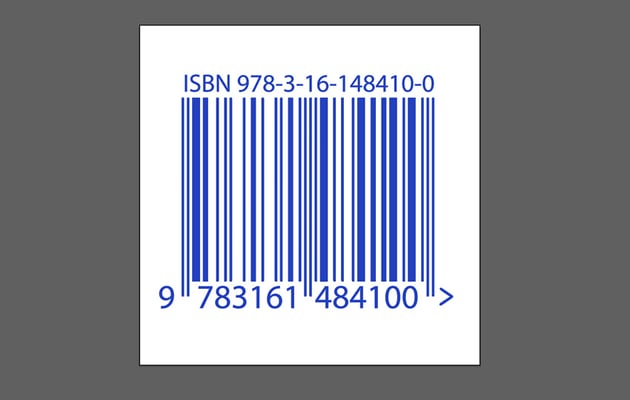
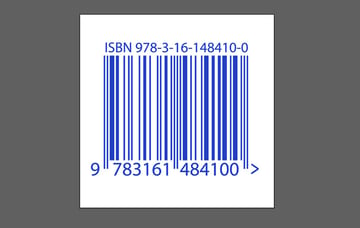
Step 10
Let’s push this even further. I’d like to make the top of my barcode look like ocean waves.
Start by selecting the Pen Tool. We’re going to use the Pen Tool to draw a custom shape. We’ll use this shape to “cut out” the top of our barcode.
With the Pen Tool active, click and drag to create points. If you’re unfamiliar with how to use the Pen Tool, check out this walkthrough for extra help:
Here’s what my custom shape looks like.
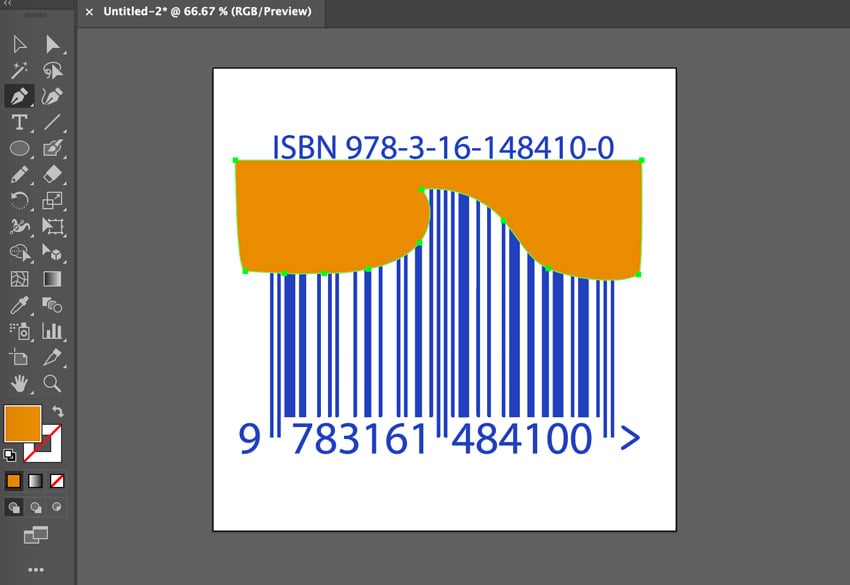
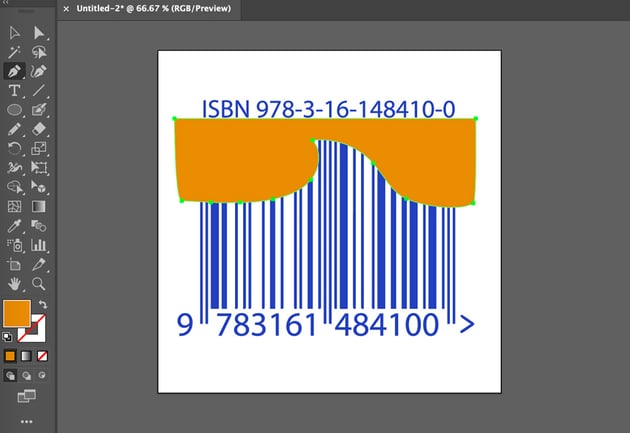
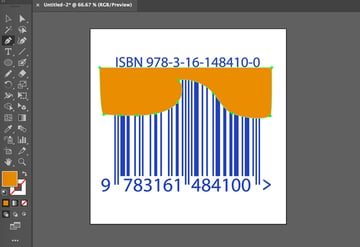
Step 11
Next, open the Pathfinder panel. You can do so by going to Window > Pathfinder.
Using the Selection Tool, select both the barcode and the custom shape we created.
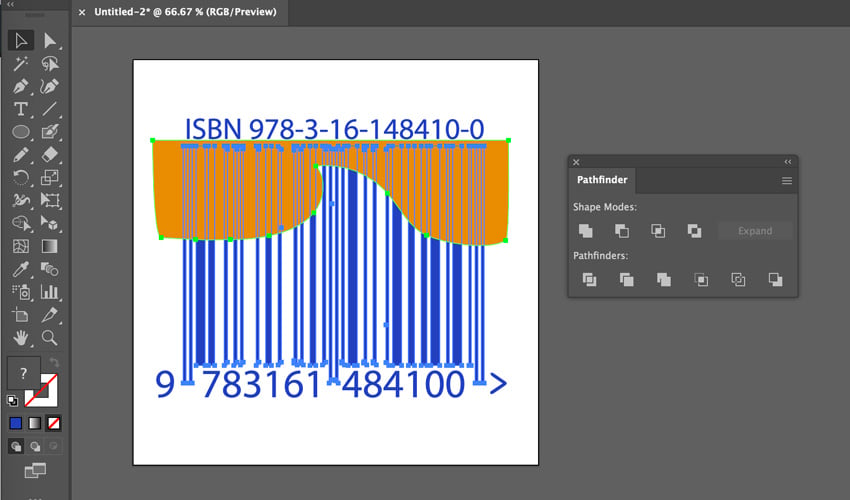
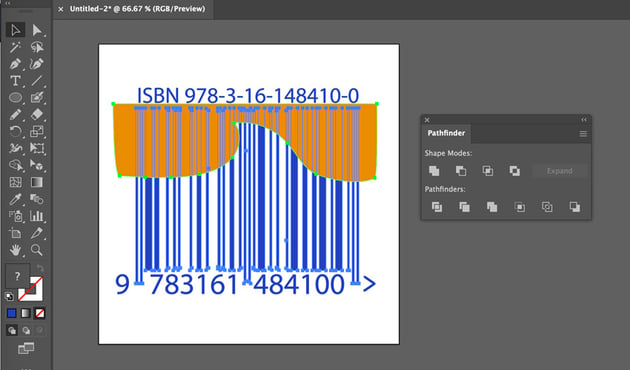
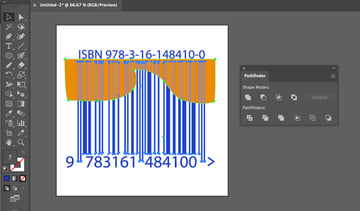
Step 12
With both the barcode and the custom shape selected, select Divide in the Pathfinder panel. This will make the color of our barcode match that of our custom shape.



Step 13
Next, with our content still selected, go to Object > Ungroup. This way, we can select our content individually again.
Delete the custom shape we’ve drawn to reveal what this effect looks like. If any extras remain outside of the barcode, make sure to select them and delete them using the Delete key on your keyboard.
Here’s what we’re left with: a barcode with a fun, wavy shape!


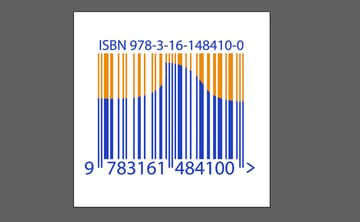
Step 14
But we can take this even further. Check out these fun beach icons from Envato Elements. They’re sleek and clean. This aesthetic could be really fun to try to work into our barcode.
Open your desired icon in Adobe Illustrator, and paste it into our barcode design.
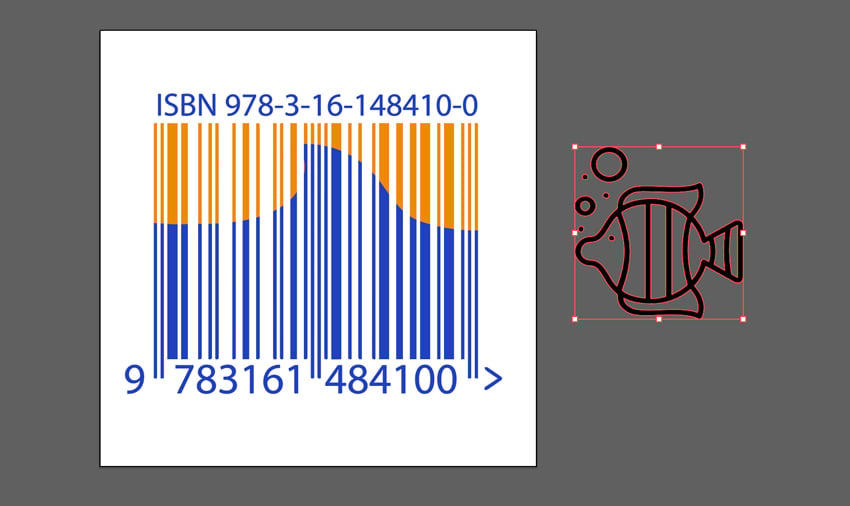
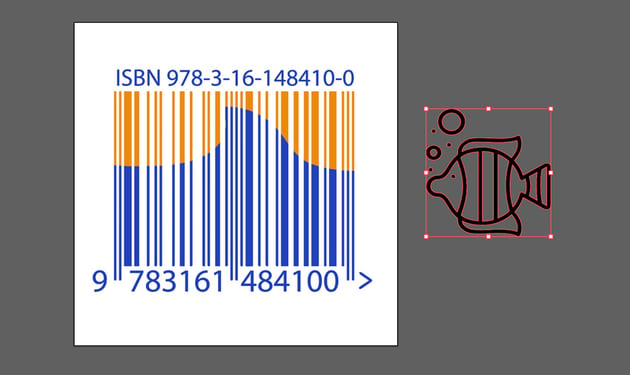

Step 15
First, make a copy of the icon. I gave it a white Stroke Color and made the stroke really thick, so our icon will have some white space around it. You can expand this shape by going to Object > Expand.
I also like to fill in any gaps with similarly colored shapes and then Unite them, using the Pathfinder panel. The result is an abstract white shape that will fit our icon.
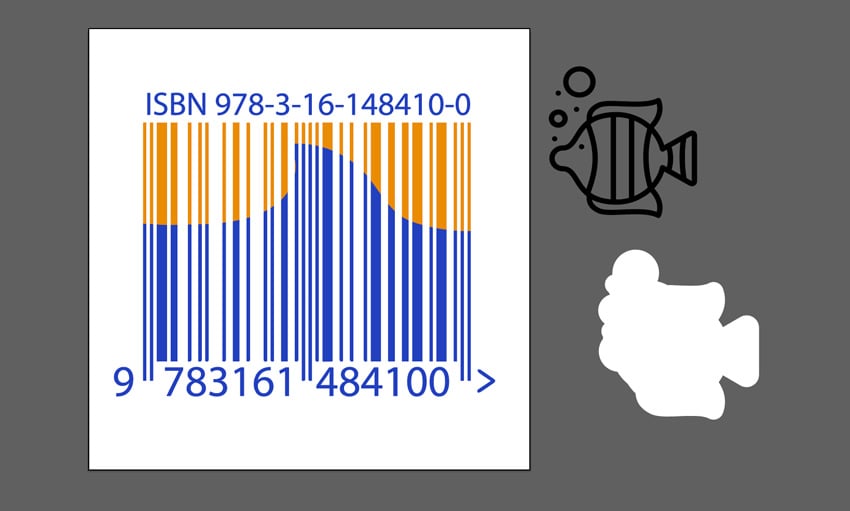
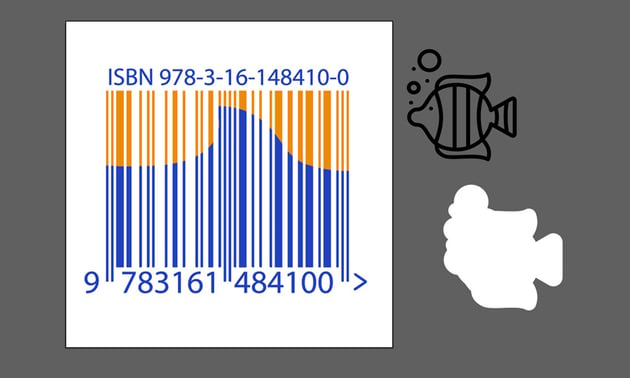
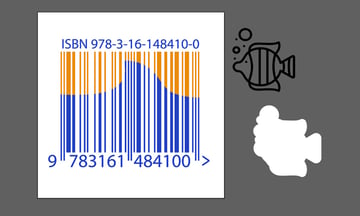
Step 16
Now, I can position my fish icon in this white space, on top of my barcode. Resize and reposition it in any way you prefer.
However, it’s important to double-check that your barcode still functions, especially if you opt to start experimenting with the design. I paused to check, and everything still scans just right!

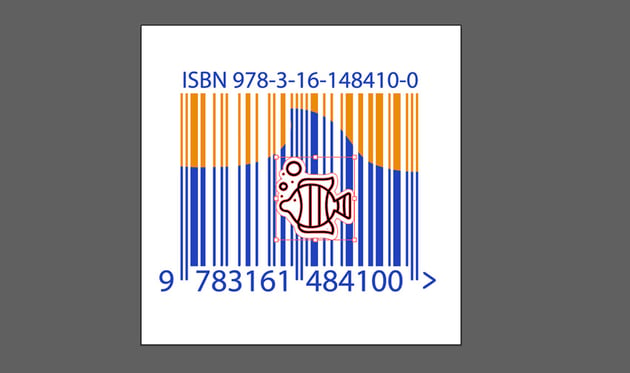
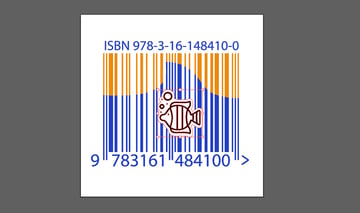
Step 17
Since the top of the barcode design is a fun, orange color, I decided to make the fish that color too. Just select the icon with the Selection Tool. Then, you can click on the Eyedropper Tool in the Tools panel, and click on the orange color to match it.
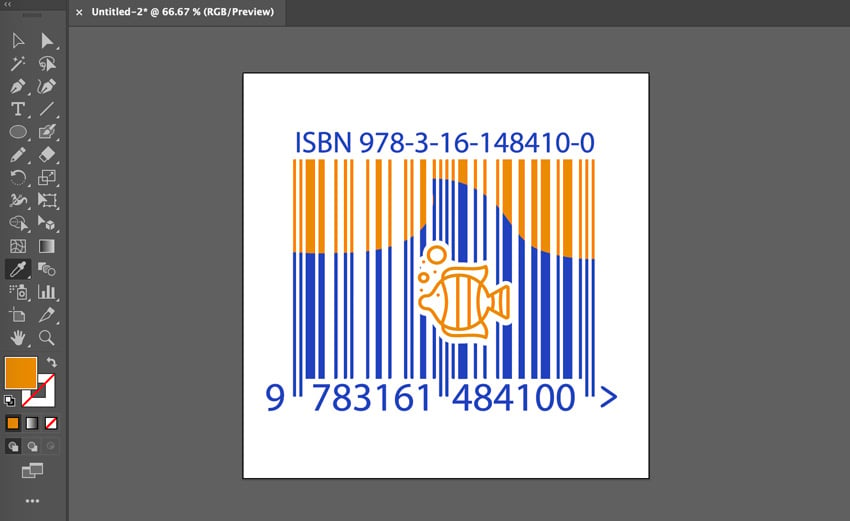
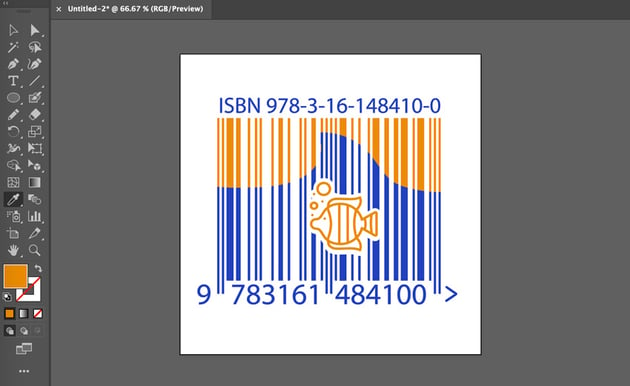
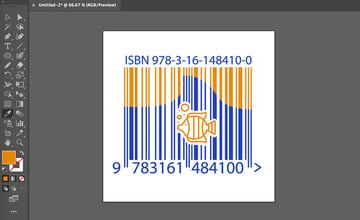
Step 18
Now that we have our creative barcode design, let’s save it. Go to File > Save to save your work as an Illustrator AI file.
Looking for another file type? Go to File > Export > Export As to save your work in a different format. You have a variety of options here, so choose the best one for your project. For example, you could also save as an SVG file, which would also be a scalable, vector format.

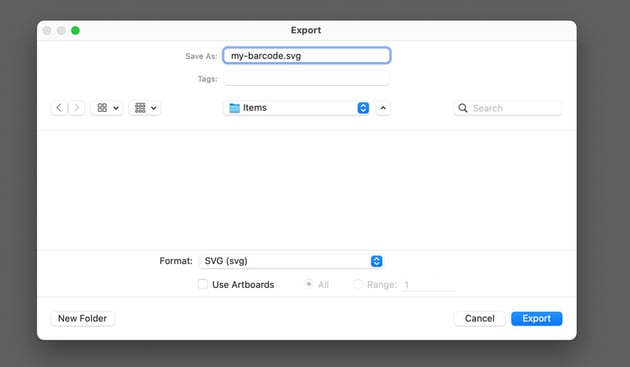
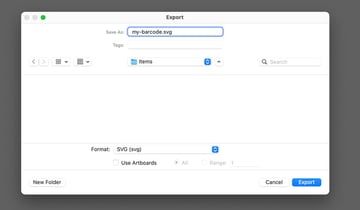
Step 19
Let’s go back to Adobe InDesign and add our new creative barcode design. Remove the original barcode we inserted by selecting it and then pressing the Delete key on your keyboard.
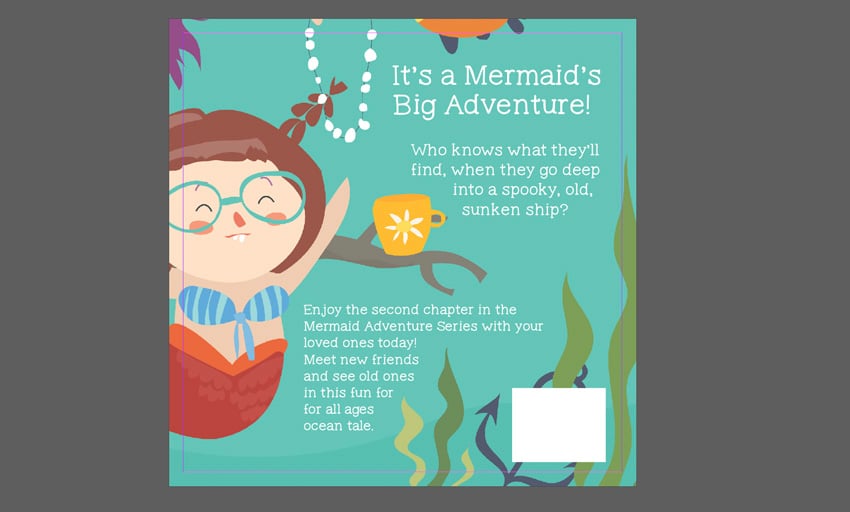


Step 20
Next, let’s place our exported creative barcode design by going to File > Place. Choose the file from your computer, and InDesign will insert it into our design for us.
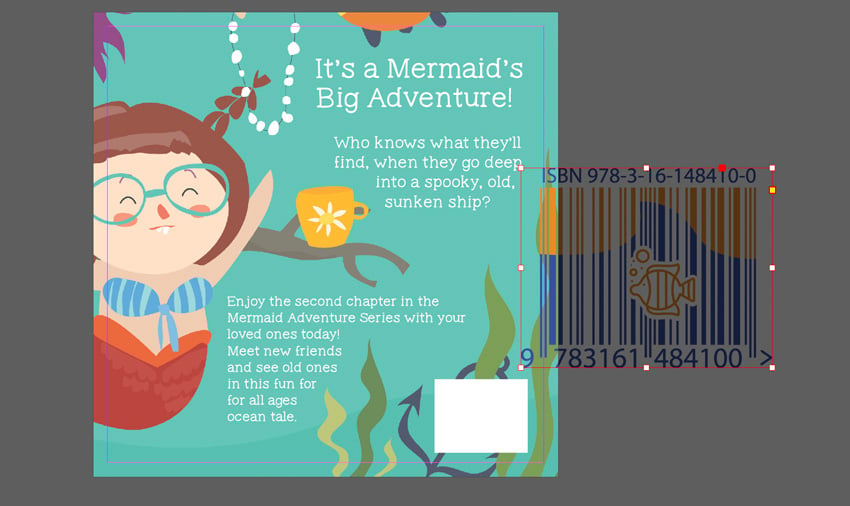
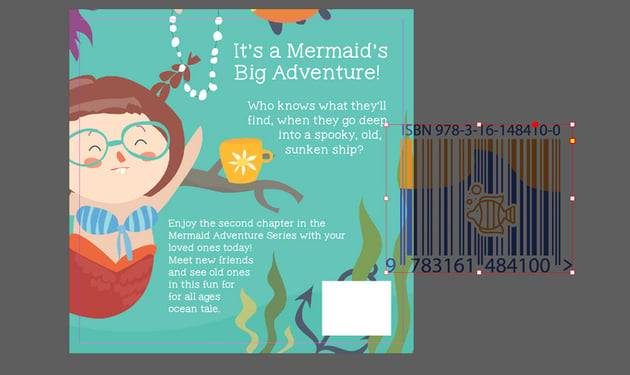

Step 21
Finally, use the Selection Tool to move and resize your creative barcode design into the correct place on your book cover.

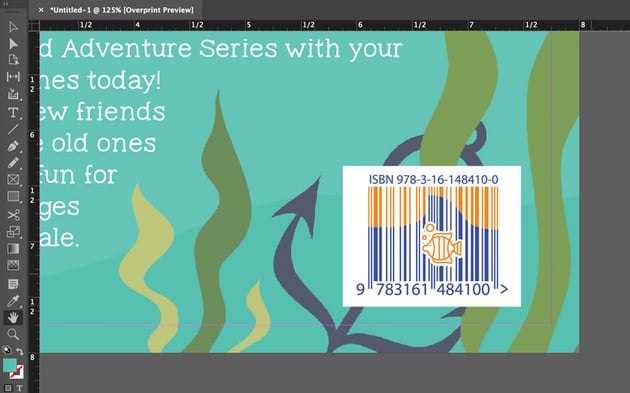
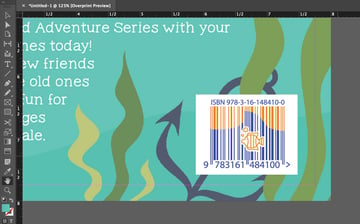
Step 22
But what if you want to make changes? Thankfully, you don’t need to start all over again. For example, I’m happy with my design, but I found myself thinking maybe the orange would look better in that sea blue color instead.
You can easily jump back to Adobe Illustrator, make changes to your AI document, and then Save. Remember to double-check and make sure any design changes still leave your barcode scannable.
Then, return to Adobe InDesign. Check out the Links panel. You can find it under Window > Links. Select the image in the Links panel, right-click on PC or Control-click on Mac, and then select Relink. And just like that, our image is updated for us.



Now You Know How to Design a Barcode Label!
There are a lot of things to consider when you’re exploring how to design a barcode label. If you’re looking to work with a creative barcode design, remember to check with your publisher, distributor, or technical specifications to make sure you’re meeting all of the technical requirements. Happy designing!



Learn More About Adobe InDesign
Want to learn even more about working in Adobe InDesign? Check out these free tutorials, right here at Envato Tuts+.
Learn More About Adobe Illustrator
You can also learn more about working in Adobe Illustrator here at Envato Tuts+. Check out these free tutorials and continue learning today.